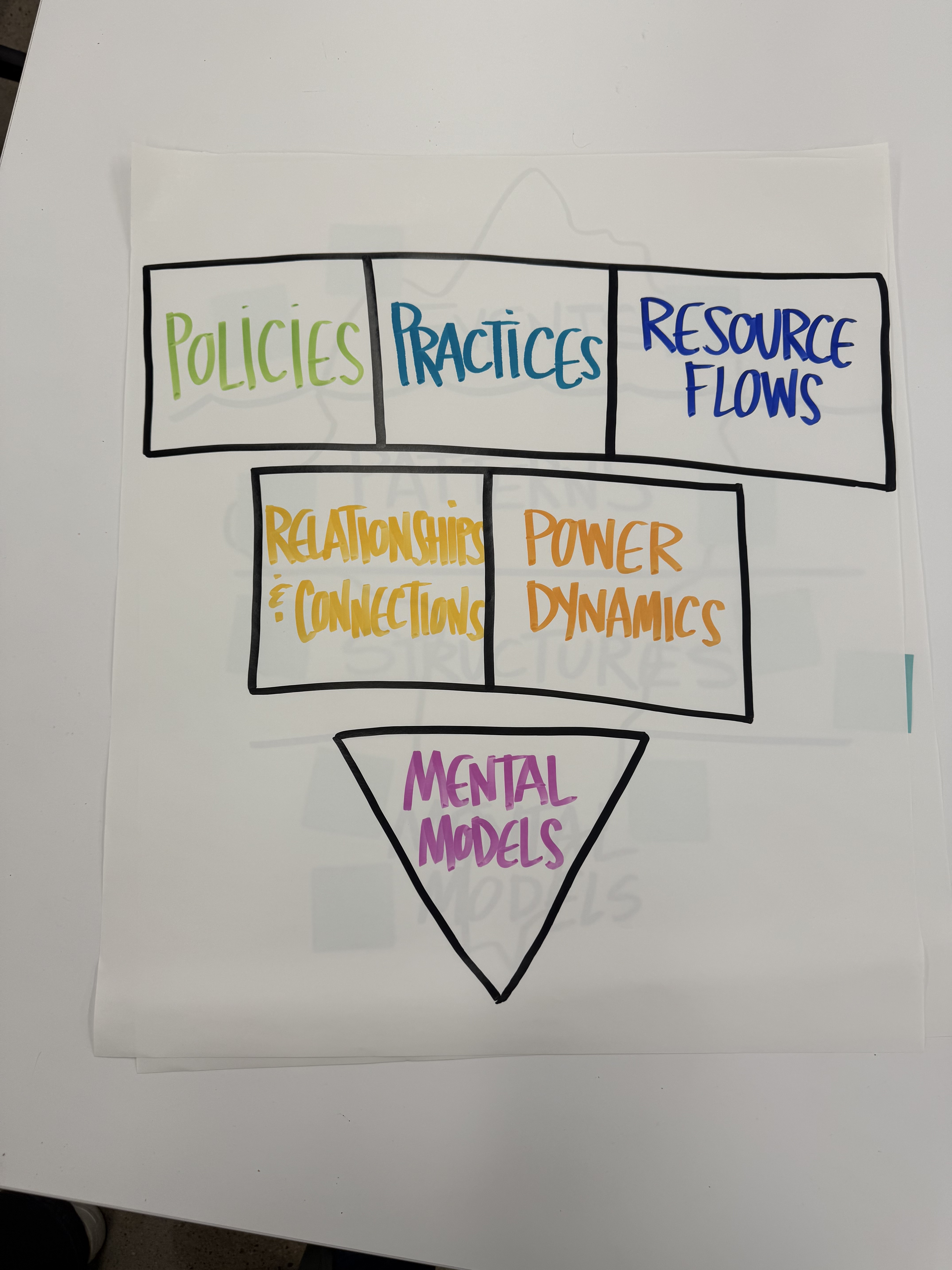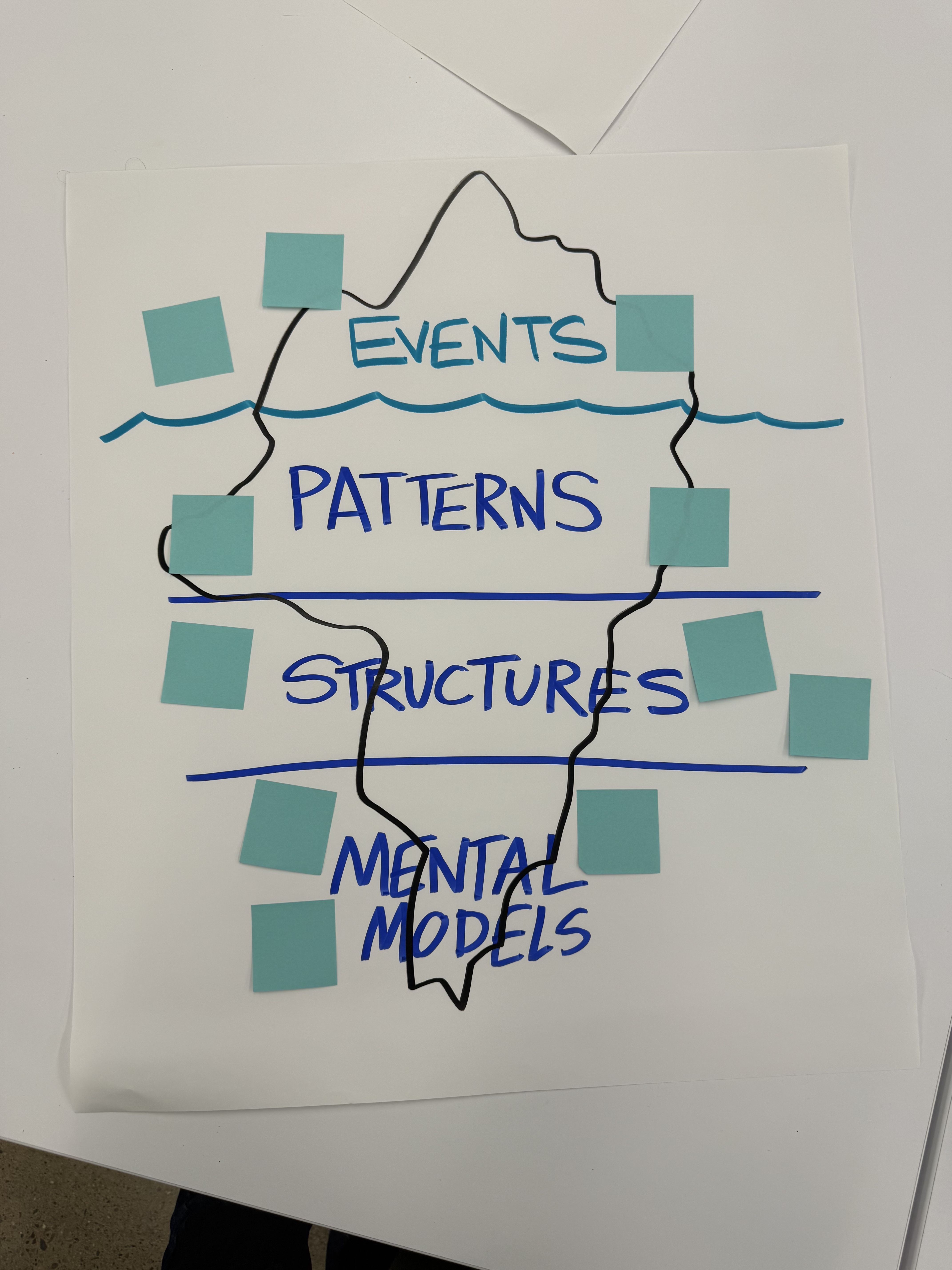
Systems Thinking Tips
Date:
October 14, 2025
10 Tips for Practicing Systems Thinking
At Mindflower Studio, we facilitate systems thinking workshops to help fuel systems change work, most often alongside nonprofits and collaboratives across Arizona. These sessions create space for groups to slow down, make sense of complexity, and discover how their efforts fit within a larger system. Together, we explore patterns, relationships, and opportunities for collaboration that can lead to more sustainable and connected change.
Systems thinking isn’t just a framework, it’s a way of seeing and making sense of the world. It helps us look beyond quick fixes, uncover root causes, and understand how different parts of a system influence one another. Whether you’re working on social impact, community well-being, or organizational transformation, these ten tips can help you strengthen your systems thinking practice and bring more clarity, creativity, and connection into your work.
1. Focus on questions
Good systems thinking starts with good questions. Keep asking and refining them as you go. Instead of rushing to answers, get comfortable exploring uncertainty. Ask “What else might be true?” or “Who else is affected by this?” or “What’s underneath what we’re seeing?” Staying curious helps uncover patterns and relationships that might otherwise stay invisible.
2. Check your assumptions and biases
We all wear different “hats” that shape how we see the world. Try taking yours off (and on again) to notice how your perspective changes. Notice what feels obvious to you but might not to others. Checking your assumptions helps you stay flexible, grounded, and better able to engage with different viewpoints. Do some digging on cognitive biases and how those might affect your work, your collaboration, and your perspective on the challenge to solve.
3. Mix your methods and tools
Experiment! Use a range of methods, from mapping and storytelling to sticky notes and dialogue. Remember that even simple tools can support complex discussions. Visual tools, in particular, act like an extra facilitator in the room. There are so many (too many?) tools for systems change work. Take it one step at a time, one tool at a time.
4. Pictures are better than words
To solve systems challenges, you have to be able to see them. Make your ideas visual and mobile, sketch them, map them, move them around on sticky notes. Seeing relationships and flows makes it easier to notice leverage points and opportunities. When we make thinking visible, we can shift it, expand it, and find patterns we might have missed in words alone.
5. Zoom in and zoom out
Think of systems thinking like photography. Sometimes you need a close-up to understand the details of a person’s experience or a specific process. Other times, you need a wide landscape shot to see how everything connects across the larger picture. Remember Prezi? It’s a great example of zooming in and out to explore ideas at different levels. Or imagine yourself as a detective with a wall of images and red strings, connecting clues and patterns. The magic happens when you step back to see how it all fits together.
6. Check in on your FourSight or problem-solving preferences
Everyone brings a different approach to creative problem-solving. Some people love clarifying the challenge, while others jump straight into generating ideas or taking action. Knowing your own preferences (and your teammates’) helps balance the process. It can also reveal when a team might be skipping important steps or spending too long in one mode. Remember: We all must do all 4 steps of the process, regardless of preference, to solve problems effectively.
7. Notice where you are in the process
It’s easy to get lost in the complexity. Pause every so often and ask, “Where are we right now?” Are you clarifying, ideating, developing, or implementing? Systems work often benefits from looping through smaller, “micro” versions of these four steps to keep moving forward while staying open to learning.
8. Diverge and converge
Healthy systems thinking balances expansion and focus. Diverge to explore many ideas and perspectives. Then converge to narrow, refine, and make meaning. This rhythm — of opening up and coming back together — helps groups navigate complexity without getting stuck in either endless brainstorming or premature decisions. Remember: Don't diverge and converge at the same time!
9. Celebrate little wins
Systems change doesn’t happen overnight. It unfolds through moments of learning, small shifts in relationships, and new ways of seeing. Celebrate those small wins. They’re not just milestones, they’re signs that change is already happening.
10. Keep connecting
Once you start practicing systems thinking, you’ll notice it everywhere. Articles, conversations, and everyday experiences can spark new insights. Keep building relationships and bringing in new thinking partners. Learn with and from one another. The more perspectives you invite into the process, the richer and more complete your understanding of the system becomes.
At Mindflower Studio, we help teams and organizations make sense of complexity through visual thinking, facilitation, and collaborative learning. Systems thinking gives us a shared way to explore challenges, see connections, and grow together, one question, one conversation, one sketch at a time.
,



